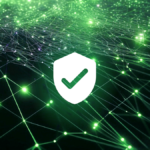PCI DSS refers to the Payment Card Industry Data Security Standard – an information security standard with requirements for companies that accept, process, store or transmit credit card data. The aim of the standard is to protect customer financial data from cyber-criminals and accidental data leakage.
As with all regulations, PCI compliance can seem challenging and complex – especially for smaller businesses. Despite its complexity, though, organizations shouldn’t shy away from compliance. Not only is this regulation good for data security; it’s good for your reputation and bottom line.
For example, penalties for non-compliance can range from $5,000 to $100,000 per month for the merchant. This is enough money to put some companies out of business!
It’s therefore paramount to take PCI-DSS seriously. If you’re not sure where to start, we’ve got you covered. Below, we’ll look at best practices for PCI-DSS, with a focus on how data discovery tools can supercharge your compliance posture.
What are the 12 requirements of PCI DSS?
In our last blog, we explored what PCI DSS is in detail. You can read the full blog here and here’s also a quick recap of the 12 requirements:
A lot of the requirements within PCI-DSS make good business sense. Things like maintaining a firewall, patching and implementing authentication practices should be part of your core security posture.
Where organizations often struggle is with requirements 3, 7 and 8, which are essentially about discovering and protecting customer card data.
How to find and protect customer cardholder data
Finding and securing sensitive data in the modern enterprise is harder than ever before. It used to be that all sensitive information lived on the network. Now, with the rise of hybrid work, mobile solutions and SaaS applications, data travels and resides across tons of different places.
While this naturally makes securing cardholder data harder, organizations still need to find a solution. This is where data discovery and classification tools can help.
These solutions use automation and pattern recognition to identify cardholder information within your networks and applications, giving you much needed visibility that’s vital for compliance. The best-in-breed of these solutions then use data loss prevention tactics, like redaction, blocking and alerts, to ensure that cardholder data is only accessed and used compliantly.
What to look for in a data discovery solution
The data discovery market is overwhelmingly crowded. Many vendors – from cloud storage providers to cybersecurity specialists – offer data discovery, classification and protection capabilities. This means it can be tricky to find the right provider, at the right cost, and with adequate protections for PCI compliance.
We advise you to keep a few things in mind when shopping around for data discovery tools, as demonstrated in our handy checklist below.
- Consider the holistic environment: Cardholder data lives in many places: databases, SaaS applications, the network and so on. You therefore need a collection of solutions that offer you data discovery capabilities from end-to-end. You may well choose one provider for network data discovery and another for cloud software for complete visibility.
- Structured and unstructured data: Card data often resides in many formats, so you need a tool that can discover both structured and unstructured data.
- Harness the power of automation: It’s no secret that IT teams are overwhelmed by alerts and support requests. Your solution should ease your team’s workload – not add to it. Best-in-breed solutions harness the power of AI and machine learning to automate the data discovery, classification and protection cycle, so your IT team rarely needs to intervene.
- In-built auditing and reporting: Manual compliance reporting is tedious and prone to errors. A good solution will perform automatic reporting for you, producing ready-to-go reports that are perfect for your compliance audits.
How Polymer can help with data discovery for cardholder data
In today’s environment, companies are moving more and more workloads to cloud environments like Slack, Google Workspace and Teams. Ensuring PCI DSS compliance in these applications is one of the trickiest facets of the regulation – unless you have the right support in place.
Our solution gives you unparalleled visibility and control over cardholder data in your SaaS applications. It uses a self-learning engine to quickly and automatically discover, classify and secure sensitive data like PCI, PII and PHI in SaaS applications. We use a unique algorithm, in-built with deep learning capabilities, to identify all types of cardholder data.
Then, based on the principles of zero trust, our solution ensures that only authorized, legitimate users interact with this data – remediating potential compliance violations and risky actions in real-time.









